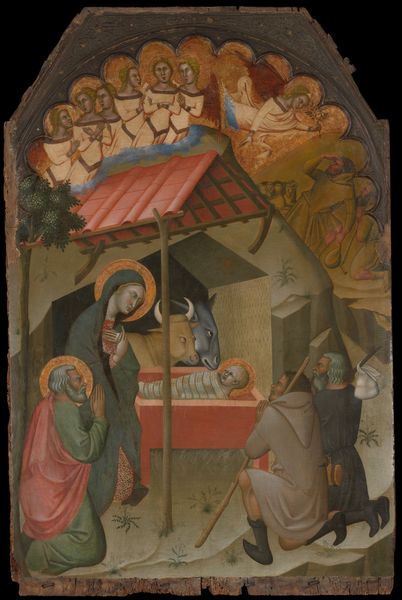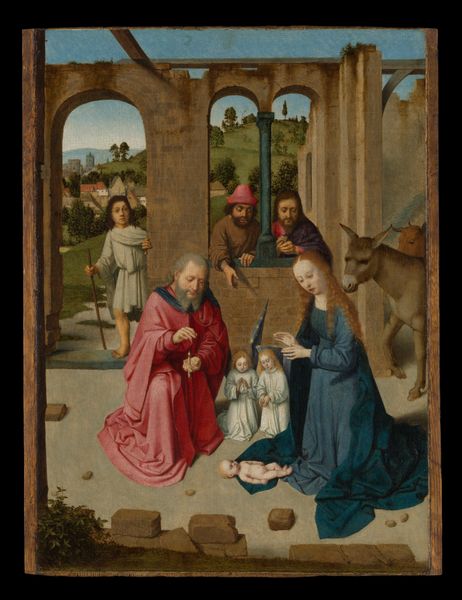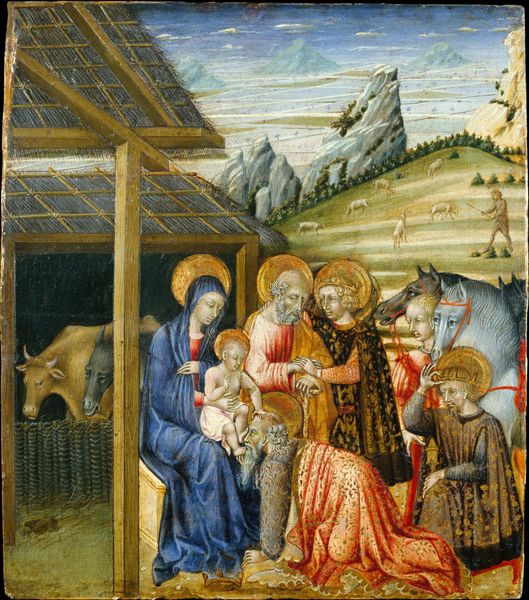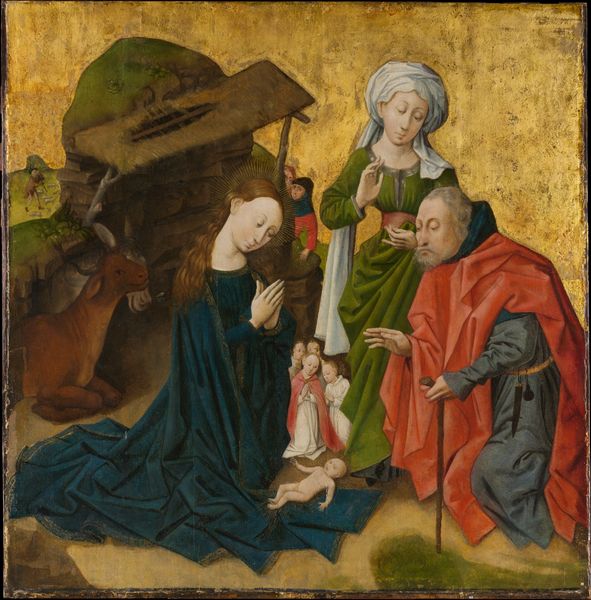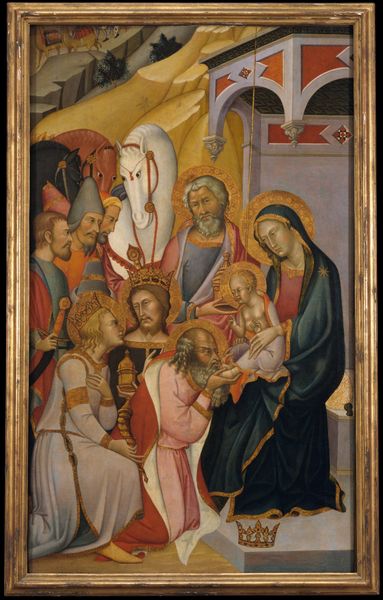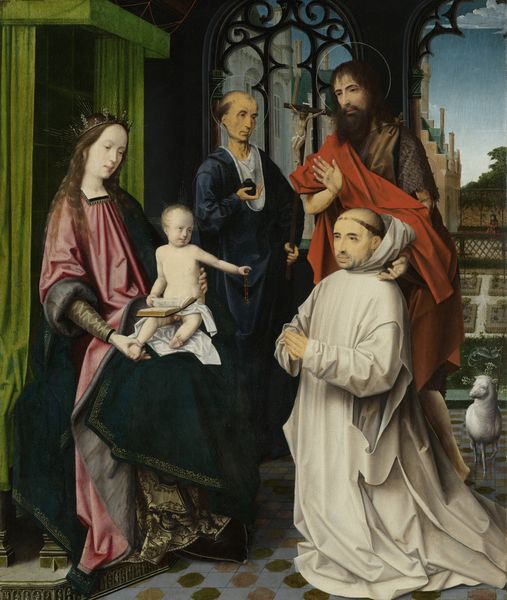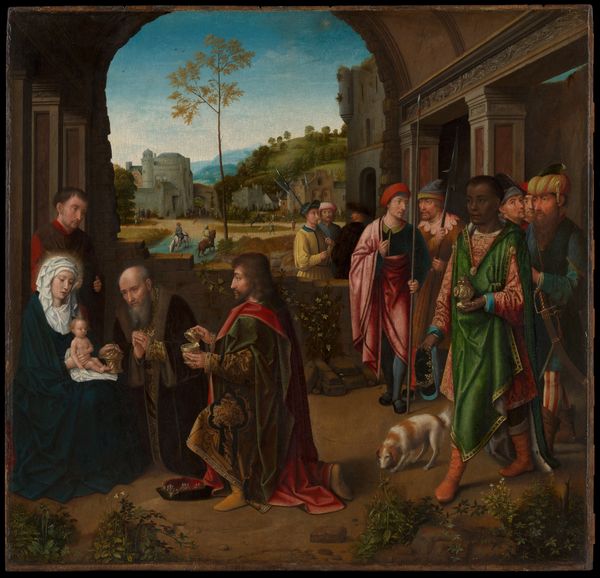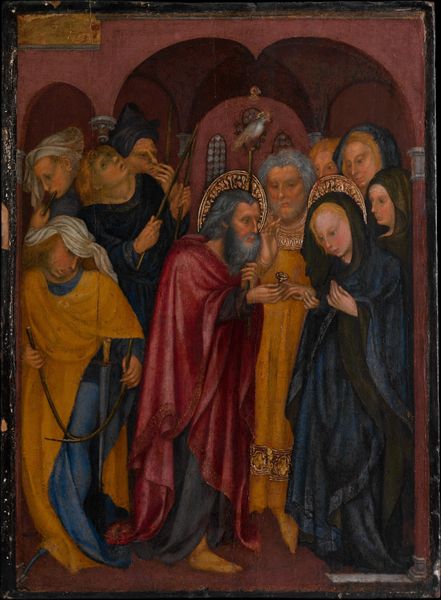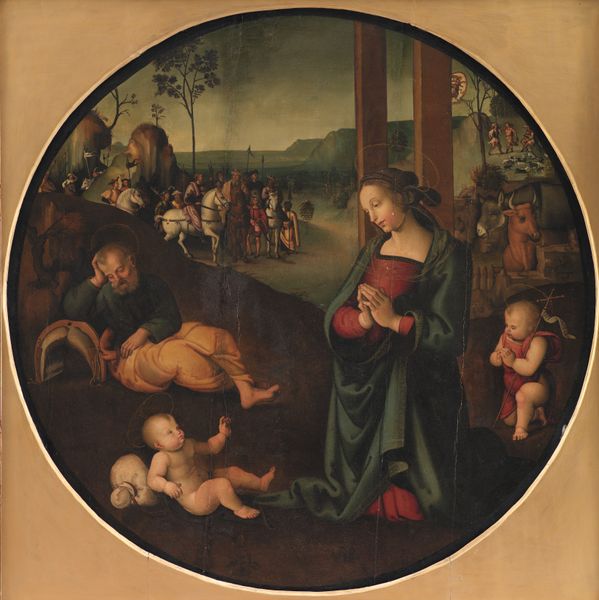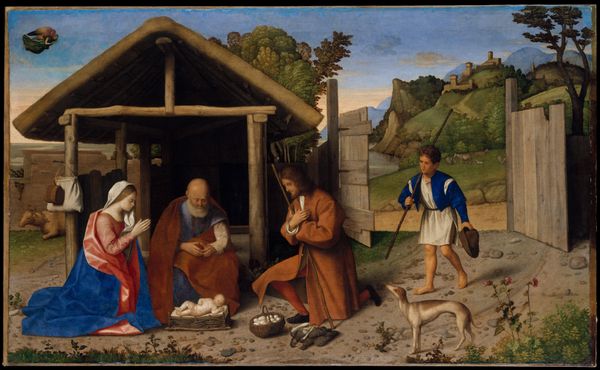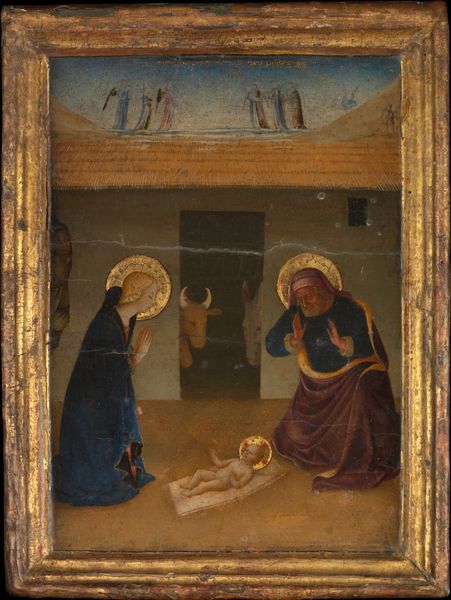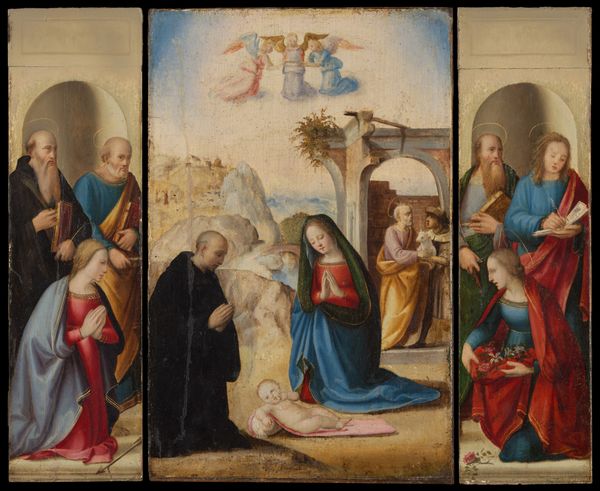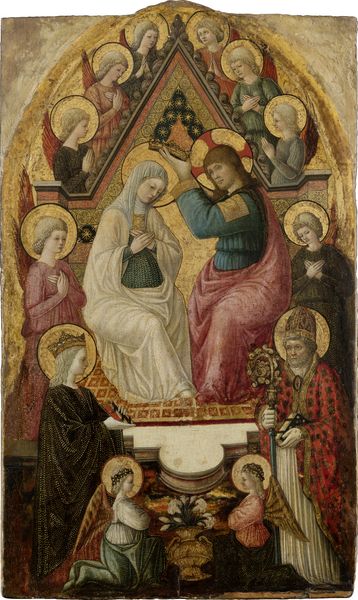
painting, oil-paint
#
portrait
#
painting
#
oil-paint
#
landscape
#
figuration
#
oil painting
#
genre-painting
#
history-painting
#
italian-renaissance
#
portrait art
#
virgin-mary
#
angel
Dimensions: 8 1/8 x 5 1/2 in. (20.6 x 14 cm)
Copyright: Public Domain
Curator: Marcellus Coffermans, likely between 1545 and 1555, gives us "The Adoration of the Shepherds." You can find it here at the Met. What strikes you right away about this piece? Editor: The darkness. And the smoothness of the figures; it looks as though it’s been burnished like a piece of polished wood. The artist certainly dedicated time to craft each surface meticulously. Curator: Yes, there's a pervasive stillness and an air of manufactured perfection. Consider how the scene serves religious doctrine: note the emphasis on devotion over realism, the placement of each figure in the composition for maximum narrative effect. The politics of reverence. Editor: You can see that play out materially too. The deep, almost glazed quality of the oil paint suggests the artist and likely the workshop involved, had access to high-quality materials, impacting the final reading of class and religious power. Curator: Exactly! The expense communicates status, but let’s consider the intended audience. Genre paintings like these were widely accessible to upper-middle-class folks in Europe who wanted to imitate aristocratic lifestyles through consumption, reinforcing power dynamics through domestic display. Editor: And look how that intention shapes production – it's not just about artistry; it's about skillful and effective use of material and time in workshops with artisans and apprentices who have diverse skill sets. Note how the drapery folds fall almost uniformly and precisely. Curator: Those repetitive gestures signal a growing mercantile class and their tastes—art is responding to the demands of the market. Editor: Precisely, this goes beyond devotional art and touches the socio-economics of devotional object production. You know, looking closely at it this way highlights something fascinating to me; what once appeared smooth now appears slightly agitated on its surface—it feels like there are traces left of each craftsman’s hands. Curator: Interesting. I’ll have to think about how to factor that into our future displays. Editor: Material analysis is a constant negotiation of time, effort and cost - seeing what has remained lets you glimpse at the whole labor process, social and political.
Comments
No comments
Be the first to comment and join the conversation on the ultimate creative platform.
